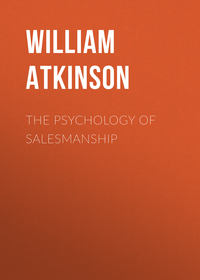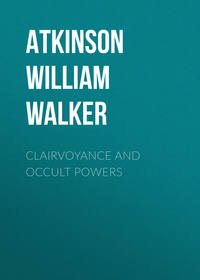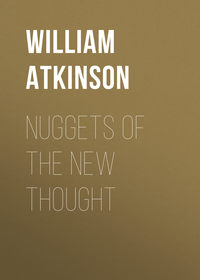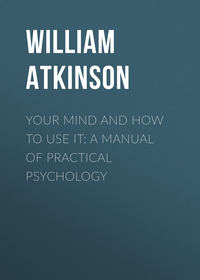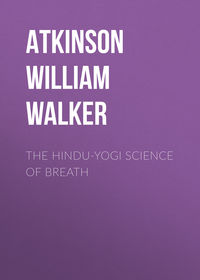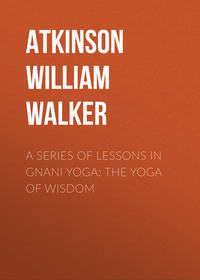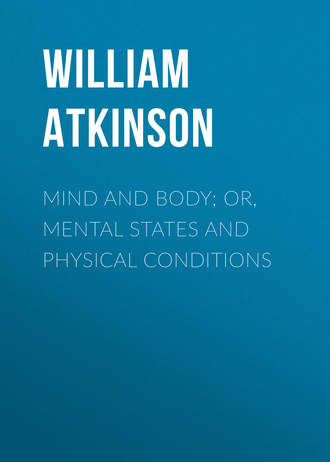 полная версия
полная версияMind and Body; or, Mental States and Physical Conditions
The modern instances of the several great “Divine Healers,” such as John Alexander Dowie of Chicago, and Francis Schlatter of Denver, give us additional evidence of the efficacy of Faith as a therapeutic agent. John Alexander Dowie, a Scotch preacher, came to America some twenty years ago, and instituted a new religion in which healing was an important feature. He claimed that all disease was the result of the devil, and that belief in God and the prayers of Dowie and his assistants would work the cure of the devil’s evil operations. Great numbers flocked to Dowie’s standard, and thousands of wonderful cures were reported. His “Tabernacle” was filled with testimonials and trophies from cured people. Back of Dowie’s pulpit were displayed many crutches, plaster-casts, braces, and other spoils wrested from the devil by Dowie and his aids. His experience meetings were thronged with persons willing and anxious to testify that whereas they had been afflicted they were now whole again. Dowie succeeded in building up a great following all over the world, and had he not overreached himself and allowed his colossal vanity to overshadow his original ideas, the probability is that he would have founded a church which would have endured for centuries. As it is, he was discredited and disowned by his followers, and his church is now but little more than a memory.
Francis Schlatter, the German shoemaker of Denver, with his Divine Healing, was a well known figure in the west several years ago. He was undoubtedly a half-insane fanatic, believing himself inspired by God to heal the nations. Persons flocked to him from afar, and he is reported to have healed thousands, many of whom were suffering from serious ailments. He afterward disappeared, and is believed to have died in the desert of the far west. Students of Mental Suggestion and Psychic Therapeutics find in the instances of Dowie and Schlatter merely the same underlying principle of Mental Healing resulting from faith, which is operative in all of the other cases mentioned. The theology, creed, theories of methods have but little to do with the cures, so long as the proper degree of faith is induced in the mind of the patient. Faith in anything will work cures, providing it is sufficiently intense and active.
Another branch of Mental Healing is seen in the modern schools of the “New Thought,” “Mental Science,” “Christian Science,” and the “Emmanuel Movement.” The authorities generally agree upon tracing the rise of these several schools to the general interest in the subject manifested in the United States and Great Britain about the middle of the last century. Some of the authorities believe that this general interest was induced largely by the teachings of Charles Poyen, a Frenchman who came from France to New England about 1835, bringing with him the French teachings and theories regarding mesmerism and the phenomena allied thereto. Poyen’s teachings attracted marked interest and attention, and he soon had a host of followers, students and imitators. Teachers of the “new science” sprang up on all sides. Many theories were evolved and actively supported by the adherents of the several prominent teachers. The rise of interest in phrenology and the dawning interest in spiritualism aided the spread of the new teachings regarding mesmerism, clairvoyance, psychic healing, etc., and the pages of many magazines and books published about that time show that a public taste had been created for the strange and mysterious.
Dr. J. S. Grimes, a physician interested in phrenology, taught that the phenomena were due to the action of a strange atmospheric force which he called “etherium.” Rev. J. Bovee Dods evolved a theory based upon the supposed existence of an electrical principle, and called his system “Electro-Biology,” by means of which he attracted to himself a large following. Dods wrote several large books on the subject, and traveled on lecture tours in this country and Great Britain, arousing great enthusiasm and making many cures. Rev. Leroy Sunderland expounded the doctrine of “patheism,” in which he combined a strange mixture of mysticism and what has since been called “suggestion,” to which he afterward added the current teachings of spiritualism after his conversion to that philosophy. It would seem that credit should be given Sunderland for his early announcement of the principle of suggestion, for he said: “When a relation is once established between an operator and his patient, corresponding changes may be induced in the nervous system of the latter by mere volition, and by suggestions addressed to either of the external senses.” The decade, 1840-1850 witnessed a remarkable interest in psychic phenomena of all kinds, and during that time there was undoubtedly laid the foundations upon which the later structures have since been erected. Any one reading the short stories of Poe, and other writers of that period, may readily see the state of public interest in these subjects at that time.
The authorities generally agree that in Phineas Parkhurst Quimby we have the direct connecting link between the period just mentioned and the present. Quimby played quite an important role in the evolution of the modern conceptions of mental healing, or psycho-therapy as it is now called. He was a poor clockmaker, of quite limited means, of good character and a strong personality. His education is said to have been limited, but he made up for his lack in this respect by his naturally keen and inquiring mind. In 1838 one of the teachers of mesmerism visited his home in Belfast, Maine, and Quimby attended the seance. He became intensely interested in what he saw, and in the theories propounded, and began to experiment on the people in his town, the result being that he soon acquired a reputation as a powerful mesmerist and a good healer. He followed along the general lines of the “Electro-Biology” theory for a time, and then evolved theories of his own. He cured himself and many others by manual treatment, and was soon kept quite busy in his healing work.
Quimby, thinking deeply regarding the cures he was making, soon came to the conclusion that while his cures were genuine, his theories were wrong. He gradually evolved the idea that diseases are caused by erroneous thinking, and that his cures resulted from changing these wrong mental states for those based upon true conceptions. He held that all that is required to effect a cure is to bring about “a change of thought.” Following upon this new conception, he ceased mesmerizing his patients, and began to treat them by simply sitting by the side of the afflicted person, picturing him as well and whole, and impressing upon the patient’s mind that he is well and whole, in Truth. From this fundamental idea he gradually evolved a philosophy which has strongly influenced that of later schools. Quimby talked much regarding his great “discovery,” as he called it, and built great hopes upon establishing “the science of health and happiness.” He began to speak of the “Truth” in his “science,” which he held to be identical with that taught by Christ, and by means of which Jesus performed his miraculous cures. Before he had firmly established his “science,” however, he died, leaving his work to be carried on by others, notably by Dr. Warren F. Evans, and Julius A. Dresser, to whom should be given the credit for launching what is now known as “the New Thought Movement.”
Mrs. Mary Baker G. Eddy, who afterward established “Christian Science” was one of Quimby’s patients and students, and Dresser and others have positively stated and claimed that from him she received her ideas of the philosophy which she afterward developed into the great “Christian Science” movement. Mrs. Eddy, and her adherents, as positively deny to Quimby any credit for having inspired Mrs. Eddy’s work. We merely state the opposing sides of the controversy here, taking no sides in the matter, the discussion not concerning us in the present consideration.
The success of Evans and Dresser, and of Mrs. Eddy, in their respective schools and organizations, have caused many other teachers to come to the front, until at the present time there are many schools, cults and organizations basing their cures upon the broad principles of Mental Healing. Mrs. Eddy, and her followers, deny having anything in common with the other schools, however, holding that the latter are concerned with “mortal mind” while “Christian Science” alone is based upon Divine Mind, or Truth. In spite of the conflicting claims and theories, the fact remains that thousands of persons have been healed of various diseases by the various schools, cults, and teachings. To the authorities who stand outside of and apart from these opposing organizations, it seems that all the cures are based upon the same general principle, i. e., that of the influence of mental states over physical conditions, and that religious theories or metaphysical philosophies have nothing whatever to do with the production of the cures, except in the direction of giving a strong suggestion to those accepting them. The fact that all the schools make cures, in about the same proportion, and of the same general classes of complaints, would seem to show that the theories and dogmas have nothing to do with the process of cure – and that the healing is done in spite of the theories, rather than because of them.
The much advertised “Emmanuel Movement” now so popular in the orthodox churches throughout the country, is recognized by all the authorities as being nothing more than suggestion applied in connection with the religious and theological principles of the churches in question, and, in truth, as applying methods more in favor by the old school of mesmerists than by the later “New Thought” practitioners, or by the “Christian Science” healers. From this movement, however, there will probably evolve a more scientific system, manifesting none of the crudities which so disfigure its present stage, at least in the hands of some of its practitioners.
In the following chapter we may see that the same element of Faith, Belief and Expectancy is manifested in all the various forms of Mental Healing, by whatever name, or under whatever theory, the method is applied. In short, that the cures are purely psychological, rather than metaphysical or religious, in their nature.
CHAPTER VI
FAITH CURES
Following the scientific study of the phenomena of cures of physical illness by means of the power of mental states, and the recognition of the fact that there is a common principle operative under the various guises and forms, there sprang into scientific usage the term “Faith Cures” which was used to designate all instances and forms of cures coming under the general classification of mental healing. Prof. Goddard defines the term as follows: “A term applied to the practice of curing disease by an appeal to the hope, belief, or expectation of the patient, and without the use of drugs or other material means. Formerly it was confined to methods requiring the exercise of religious faith, such as the ‘prayer cure’ and ‘divine healing,’ but has now come to be used in the broader sense, and includes the cures of ‘Mental Science,’ and hypnotism; also a large part of the cures effected by patent medicines and nostrums, as well as many folk-practices and home remedies. By some it is used to include also Christian Science, but the believers in the latter regard it as entirely distinct.”
The term “Suggestion,” used in the same sense as “Faith Cure” in relation to the healing of disease, has also come into popular usage, but inasmuch as Suggestion has a much larger meaning outside of its therapeutic phases, it may be said the best authorities to-day use the term “Faith Cure” as representing simply one phase of Suggestion.
Prof. Goddard, in his article on “Faith Cure,” in the New International Encyclopaedia (Dodd, Mead & Co., New York), says: “Besides these recognized forms (divine healing, mental science, etc.), faith cure is an important element in cures wrought by patent medicines and nostrums, home remedies and folk practices. The advertisement, testimonial of friend, or family tradition arouses the faith of the sick man, and he comes to believe that he needs only to follow directions to be fully cured. The actual value of faith cure as a therapeutic method has been the subject of much discussion. It can no longer be denied that it has value. From divine healing to patent medicine and Father Kneipp’s water cure, all cure disease. Each appeals to a particular type of mind, but the results are practically the same in all – same diseases cured, same successes, same failures. Many faith-curists claim that all diseases in all persons can be cured by their method; others hold that the principle is of limited application. Of them all, the hypnotists are the only ones who do not make sweeping claims.”
After stating “the tendency to exaggeration and the infrequency of impartial judgment” in connection with many instances of claimed cures, the above mentioned authority proceeds as follows: “The actual cures, however, are sufficiently numerous and sufficiently striking to need an explanation. These different forms agree in only one point – viz., the mental state of the patient is one of hope and expectation. Can states of mind cause or cure disease? Some familiar occurrences seem to justify an affirmative answer. It is well known that certain glands and secretions are markedly affected by emotions. Fright causes the saliva to cease to flow and the perspiration to start. Sorrow causes the lachrymal glands to secrete tears. Happiness favors digestion, unhappiness retards it. Mosso has demonstrated that the bladder is especially sensitive to emotional states. In general, the pleasant emotions produce an opposite physical effect from the unpleasant ones. There are many glands within the body whose action under emotion we cannot observe; but we may reasonably assume that they also are affected by emotional states. Hence, if unpleasant emotions so act upon the glands as to derange the system and cause disease, the pleasant emotions may reasonably be assumed to tend to restore the normal functions. The various forms of faith cure tend strongly to put the patient in a happy frame of mind – a condition favorable to health. However, there are all degrees of faith and wide differences in the way the system responds to the emotional state. One person is slightly affected by a strong emotion; another is strongly affected by a weak emotion. Hence, there must always be a wide difference in the results of faith-cure methods. The diseases most amenable to faith cure are nervous – including many not recognized as nervous, but having a neural condition as their basis – and functional derangements. Organic diseases are not usually cured, though the symptoms are frequently ameliorated. Chronic diseases due to neuro-muscular habit often yield to hypnotic treatment.”
Prof. R. P. Halleck says: “Were it not for this power of the imagination, the majority of quack nostrums would disappear. In most cases bread pills, properly labeled, with positive assurances of certain cures accompanying them, would answer the purpose far better than these nostrums, or even much better than a great deal of the medicine administered by regular physicians. Warts have been charmed away by medicines which could have had only a mental effect. Dr. Tuke gives many cases of patients cured of rheumatism by rubbing them with a certain substance declared to possess magic power. The material in some cases was metal; in others wood; in still others, wax. He also recites the case of a very intelligent officer who had vainly taken powerful remedies to cure cramp in the stomach. Then ‘he was told that on the next attack he would be put under a medicine which was generally believed to be most effective, but which was rarely used.’ When the cramps came on again, ‘a powder containing four grains of ground biscuit was administered every seven minutes, while the greatest anxiety was expressed (within the hearing of the party) lest too much be given. Half-drachm doses of bismuth had never procured the same relief in less than three hours. For four successive times did the same kind of attack recur, and four times was it met by the same remedy, and with like success.’ A house surgeon in a French hospital experimented with one hundred patients, giving them sugared water. Then, with a great show of fear, he pretended that he had made a mistake and given them an emetic instead of the proper medicine. Dr. Tuke says: ‘The result may easily be anticipated by those who can estimate the influence of the imagination. No fewer than eighty – four-fifths – were unmistakably sick.’
“We have a well authenticated case of a butcher, who, while trying to hang up a heavy piece of meat, slipped and was himself caught by the arm upon the hook. When he was taken to a surgeon, the butcher said he was suffering so much that he could not endure the removal of his coat; the sleeve must be cut off. When this was done, it was found that the hook had passed through his clothing close to the skin, but had not even scratched it. A man sentenced to be bled to death was blindfolded. A harmless incision was then made in his arm and tepid water fixed so as to run down it and drop with considerable noise into a basin. The attendants frequently commented on the flow of blood and the weakening pulse. The criminal’s false idea of what was taking place was as powerful in its effects as the reality, and he soon died… There is perhaps not a person living who would not at times be benefited by a bread pill, administered by some one in whom great confidence was reposed.”
The same authority also says: “It has been known for a long time that if the attention is directed toward any bodily organ, abnormal sensations may be caused in it, and disease may be developed. The renowned Dr. John Hunter said: ‘I am confident that I can fix my attention to any part, until I have a sensation in that part.’” Dr. Tuke says that these “are words which ought to be inscribed in letters of gold over the entrance of a hospital for the Cure of Disease by Psychopathy.” Hunter’s confident assertion is the more interesting because, drawn from his own experience, it shows that the principle is not confined in its operation to the susceptible and nervous, but operates even on men of the highest mental endowment. We have examples from the literature of the seventeenth century, showing how the expectation of a complaint will produce it. In 1607 an ignorant English physician told a clergyman’s wife that she had sciatica, although there was, in reality, nothing the matter with her sciatic nerve. Her attention was thereby directed to it and a severe attack of sciatica was the result. When a person inexperienced in medicine reads carefully the symptoms of some disease, he is apt to begin an attentive search for those symptoms and to end by fancying he has them. Seasick persons have been relieved of their nausea by being made to bail a leaking boat from the fear that it would sink. All their attention was thereby diverted from themselves. Many can recall how children, and grown persons, too, have forgotten all about their alleged intense thirst, as soon as their attention was diverted. Some persons, after eating something which they fancy is a trifle indigestible, center their attention upon the stomach, expecting symptoms of indigestion, and are often not disappointed. A man who had good reason to fear hydrophobia, determined that he would not have it. The pain in the bitten arm became intense, and he saw that he must have something to divert his attention from the wound and his danger. He therefore went hunting, but found no game. To make amends, he summoned a more inflexible will and exerted at every step ‘a strong mental effort against the disease.’ He kept on hunting until he felt better, and he mastered himself so perfectly that he probably thereby warded off an attack of hydrophobia. Accordingly as we center our attention upon one thing or another, we largely determine our mental happiness and hence our bodily health. One person, in walking through a noble forest, may search only for spiders, and venomous creatures, while another confines his attention to the singing birds in the branches above. One reason why travel is such a cure for diseases of body and mind is because so many new things thereby come in to claim the attention and divert it from its former objects. The following expression from Dr. Tuke should be remembered: ‘Thought strongly directed to any part tends to increase its vascularity, and consequently its sensibility.’”
Dr. C. F. Winbigler says: “The practitioner secures the same effects from a placebo or powdered pop-corn as from some drugs by using suggestion with the former. Every successful physician has used this method at one time or another, and sometimes when he was utterly puzzled as to what he should prescribe, he thus secured a marvellous result, and a cure of the patient was effected… Every believer in Psycho-therapeutics knows that there is a psychical as well as a physical effect from the use of drugs. The psychical value is based on the expectation of their special action, and that which is in the physician’s mind may be subtly and powerfully carried over into the patient’s mind. The physician’s personality, attitude and interest in the patient accomplishes vastly more than the drugs he prescribes or administers. If he is cheerful and hopeful, he gives potency to their action; if he is gloomy, pessimistic and hopeless, he nullifies their effects. The cure of the patient is effected through the subconscious mind, and the attitude and bearings of the physician, attendants, the surroundings and the medicines employed, become powerful suggestions.”
Prof. Elmer Gates says: “The system makes an effort to eliminate the metabolic products of tissue-waste, and it is therefore not surprising that during acute grief tears are copiously excreted; that during sudden fear the bowels and the kidneys are caused to act, that during prolonged fear, the body is covered with a cold perspiration; and, that during anger, the mouth tastes bitter, due largely to the increased elimination of sulpho-cyanates. The perspiration during fear is chemically different, and even smells different from that which exudes during a happy mood… Now if it can be shown in many ways that the elimination of waste products is retarded by sad and painful emotions; nay, worse than that, these depressing emotions directly augment the amount of these poisons. Conversely, the pleasurable and happy emotions, during the time they are active, inhibit the poisonous effects of the depressing moods, and cause the bodily cells to create and store up vital energy and nutritive tissue products.”
In an issue of “The American Practitioner and News,” is reported a discussion before the Lexington (Ky.) Medical and Surgical Society, in which a member, Dr. Guest, related the following experience: “I have a brother-in-law who suffers every summer with hay-fever. He has a relative who believes in Christian Science. She told him that she felt positive that she could direct him to a woman, a Christian Scientist, who would cure him. He at first objected, because he hated to go to a woman physician. He arranged, however, to communicate with her daily by letter. When his hay-fever broke out he suffered with it all that day and night, and the next morning wrote her a note telling her to put him on treatment immediately. When he returned that night he was improved and slept better. He wrote a second note the next morning and was much encouraged. The third day he repeated his letter writing and stated that the symptoms had almost ceased. And he was guying me about being cured by Christian Science when regular physicians could do nothing for him. The night of the third day, when he came home to supper, he found a note from the Christian Scientist, stating that she has been in the country and would put him under treatment the next day. Realizing that all his treatment had been only in his imagination, the symptoms reappeared with the same intensity as before.”
Dr. A. J. Parks of New York, says: “The absolute and complete control that the sympathetic nervous system exercises over the physical organization is so perfectly clear and well-known to every observer that the recital of the phenomena in the vast and countless series of manifestations is unnecessary. We are all aware of the fact that digestion is promptly arrested upon the receipt of bad news. The appetite at once disappears. It ceases, and the whole system feels the effect of the depressing impulse – the mental and spiritual wave which lowers the vital thermometer. Fear not only suspends the digestive function but arrests the formation of the secretions upon which digestion depends. A sudden fright frequently paralyzes the heart beyond recovery, whereas a pleasant and pleasing message soothes and gently excites the whole granular system, increases the secretions, aids digestion and sends a thrill of joy to the sensorium, which diffuses the glad tidings to every nerve fibril in the complex organization.”




